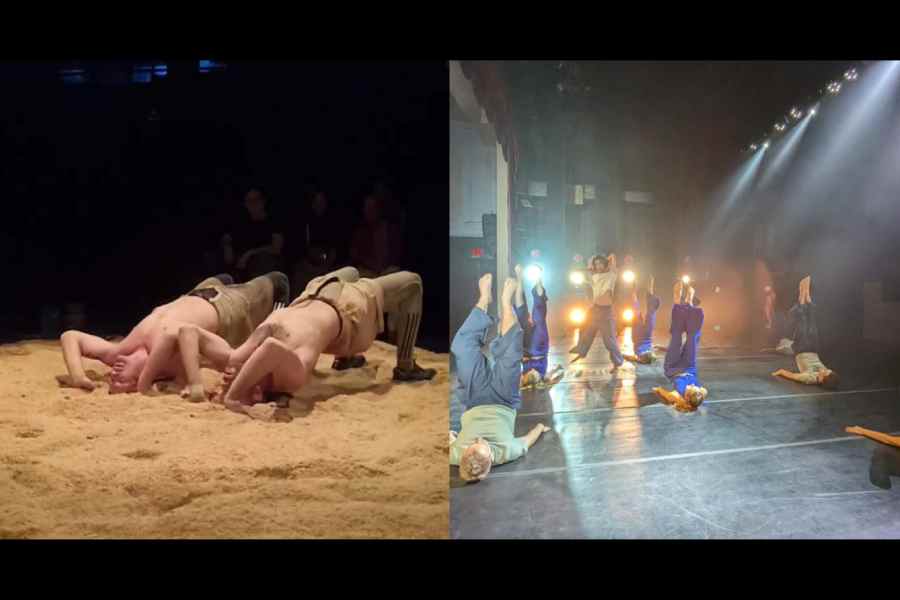At the intersection of sport and performance (one might argue that the two are not very far apart), Johanna Heusser’s Dr Churz, dr Schlungg und dr Böös (picture, left), presented at Padatik Theatre by Sparsh Studio for Performing Arts recently, brimmed with ideas and allusions. It challenged the concepts of body and gender while also looking critically at the question of what qualifies as dance. The traditional sport of Swiss wrestling, with its conservative nationalistic and patriarchal values that are deeply problematic in the current global political climate, lends itself to a conversation about the relevance of such practices in today’s world. But Heusser does not stop at that. Through this genre-bending piece, she enquires into ideas with which she cannot identify and allows her work to powerfully speak her mind. If she turns to a traditional performative practice, it has to become an object of projection through which she must propose a contemporary concept.
Rolling on a bed of sand which is the ‘stage’, the two male performers wrestle, lunge, tumble and whirl their limbs. They combat each other and shower the opponent with care when he is hurt, have goofy fun with the audience, fall and grasp each other to get back on their feet, fight and dance with their sweaty bodies in the sand. Heusser’s examination of the disciplines of wrestling and contemporary dance reveals the symbiotic relationship between the two. She uses myth and memory, the ever-shifting dynamic balances of the body, artistry, inspired design and scenography to produce thought-provoking choreography. Taking her audience on a journey of discovery with unexpected experiences at every turn, she questions the identity of the practice of Swiss wrestling through the encounters of her performers.
Commissioned by the Kolkata Literary Meet and presented at G.D. Birla Sabhagar, What I Have Not Seen Before (picture, right) worked with the dance styles of Sudarshan Chakravorty and the renowned Polish contemporary dancer-choreographer, Jacek Luminski. It was themed on perseverance, resilience, and resistance to adversity. With nine dancers from the Luminski Dance Project and the Sapphire Creations Dance Company, the piece was well-executed and the dancing was precise, technical and athletic. The bodies, moving in ritualistic unison and breaking away, represented something primal in the many encounters the piece represented. The dancers explored identity systems — represented by rows of white boxes on stage — and ecosystems, the dynamic transformation of shared practices within communities, and embodied collective performative memory as a tradition. A beautifully lit production, it had the energy, pace, flight and skill of the dancers at its core.
Often canonised as a work for children, Rabindranath Tagore’s dance opera, Tasher Desh, a powerful satire on the rigidity of the caste system and the chasm between social classes, is complex. It is a political piece in which the poet constructs within the text of the play a dream nation which is a bit of an Alice in Wonderland world. However, in the somewhat bland joint presentation of the dance drama by Diksha Manjari and Dakshinayan UK at Rabindra Sadan recently, there was little attempt to reimagine the piece. Afflicted by the syndrome of spectacle — it was brightly lit with strobes, richly costumed and extravagantly mounted with large numbers of dancers — the work was caught in clichés and was frustratingly shorn of a search for new meanings that would justify a retelling of the classic.











